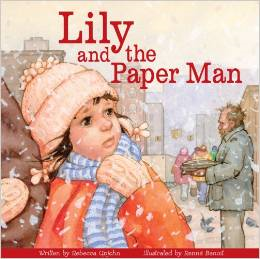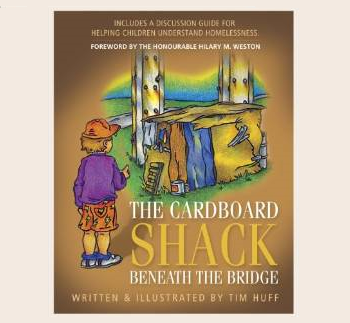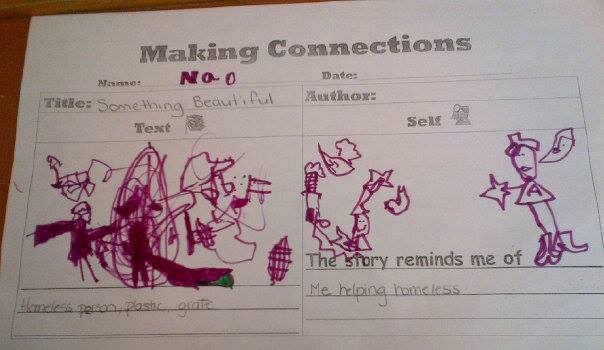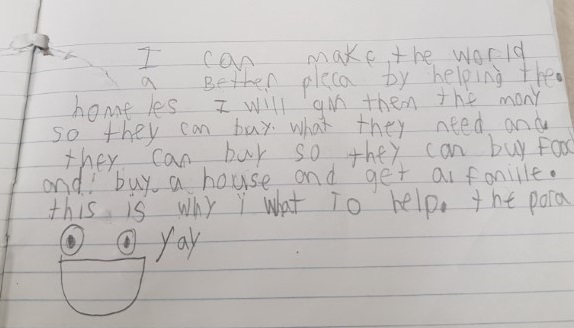Homelessness – Social Justice and Equity
Exploring Homelessness
In the City of Toronto, seeing people experiencing homelessness can sometimes be a daily occurrence. Talking about homelessness with children is, therefore, important as it enables children to talk about some of the diversity that exists within our community. During the Kindergarten years, children are developmentally ready to move from seeing the world in a very egocentric way, to beginning to see themselves as a member of a group and community. Exploring the concept of homelessness in a safe and nurturing small group environment, allows children to learn how to care for other people, show compassion and empathy, and how to be a part of the solution in addressing such issues.
In order to discuss issues of homelessness in the classroom, you have to make sure you are introducing it in a way that is real and relevant to the children. When I did a unit on this last year the children saw someone experiencing homelessness while we were on a field trip. The children asked, “Why is he sleeping on the ground?” “Why does his shoe have holes in it?”
As an educator that feels strongly about social justice, I decided these questions posed by the children provided me with the perfect opportunity to introduce the topic of homelessness into the classroom. Therefore, I did the following:
1. I found appropriate learning expectations and curriculum strands
- Ex: Social Development: 2.1 Use a variety of simple strategies to solve social problems. 3.1 Develop empathy for others. 3.2 Demonstrate respect and consideration for individual points of view.
- Language Development: 1.2 Listen and respond to others for a variety of purposes and in a variety of contexts. 1.5 Use language in various contexts to connect new experiences with what they already know.
2. I read age-appropriate picture-books to the children on homelessness
- Ex: “Lily and the Paper Bag Man” By Rebecca Upjohn
- Ex: “The Cardboard Shack Beneath the Bridge” By Tim Huff


3. I asked the children open-ended questions before, during and after reading the picture books.
- Ex: “What does it mean to have a home?” “What does it mean to be homeless?” “What can you do to help someone who is homeless?”
4. I documented the children’s responses to the open-ended questions which helped me as an educator become aware of the children’s current understanding of homelessness and any preconceived notions they may already have.
- Ex: What does it mean to have a home? -“Having a place to keep all your things and to live with your family.” – “A warm place to live.” “If you do not have a home, you do not really have anything.”
- Ex: What does it mean to be homeless? – “People with no home, no food and sleep in plastic.” -“People with no parents to love them.” -“If you don’t get an education and… you don’t go to school you live on the road.” -“It can happen when you get old, you have no home.”-“It’s when your home is broken.” -“It is when people are sad and alone and need love.” -“People who are homeless are lazy and don’t want to work.”
- Ex: What can we do to help those who are homeless? – “I saw some people sitting and sleeping on the stairs and they didn’t have a home. I wish I could give the people my house.”- “Give them food.” -“Give them pillows and blankets to sleep and rest in.” -“Give homeless people parents.” -“Ask my mom to buy a house for the homeless people to come and live in.” -“We could donate jackets and warm clothes.” -“We could lend them or give them our books so they can learn and get smart like us.” -“Maybe my parents will love them and they can live with me.”-“We could make them things to make them happy.”
5. I created a display board of the learning outcomes and children’s responses to demonstrate their learning.

6. We watched YouTube videos and cartoons about homelessness
7. Finally, the children made connections to their own lives.

